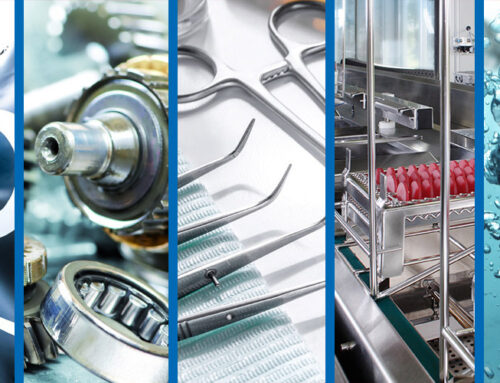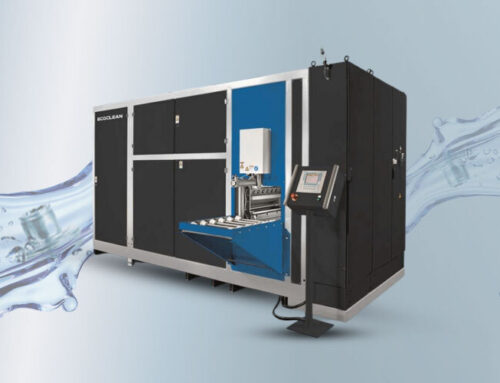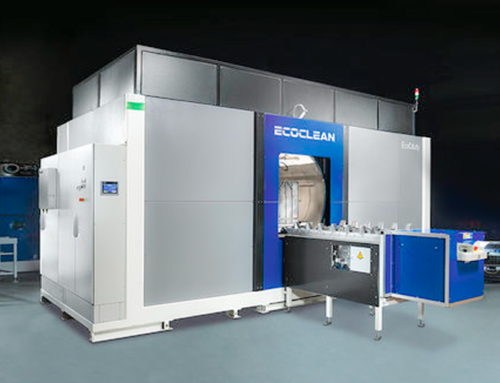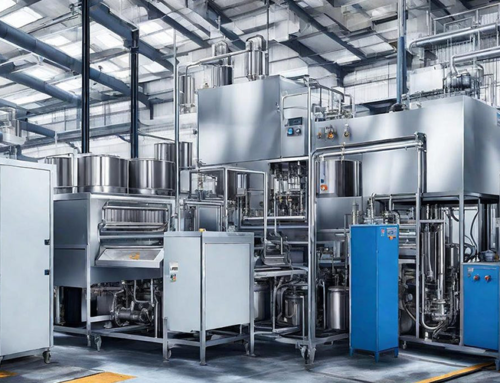Rising requirements for particulate and film cleanliness are leading to a need for ultra-fine cleaning solutions in companies from more and more branches of industry. High-purity sectors such as the semiconductor supply industry, optics and medical engineering are also undergoing a transformation.
For many years, the automotive industry was seen as the driver for increasingly stringent cleanliness specifications, especially as far as particulate cleanliness was concerned. In precision cleaning, this role has now been taken over by producers of manufacturing equipment for the semiconductor industry. The development is mainly driven by extreme ultraviolet (EUV) lithography. Thanks to this technology, ever more powerful microchips no larger than a fingertip and capable of accommodating more than ten billion transistors can be produced.
Cleanliness in the nanometric and atomic percent range
It is therefore not surprising that specifications for particulate cleanliness now extend into the nanometric range. The specifications for filmic contamination are also extremely strict. When it comes to the outgassing of organic substances and liquids as well as surface analyses for residues of inorganic substances, permissible values can even be in the atomic percent range, depending on the component. For years now, the design of processes and equipment including part fixturing devices, as well as the environmental conditions for cleaning such components, has been a core area of expertise of UCM AG, the division of the SBS Ecoclean Group which specializes in precision cleaning.
The starting point for designing multi-chamber ultrasonic cleaning systems and cleaning processes for specific tasks are the materials and geometries of the parts to be cleaned as well as the degree and type of contamination. Since outgassing limits are sometimes extremely strict, attention is also paid to selecting suitable cleaning chemicals. This, together with careful consideration of the materials and production processes used to construct the cleaning system, helps to prevent re- and cross-contamination.
New materials and processes drive requirements in optics
Two trends can be observed in the optical industry that are bringing about changes in cleaning requirements. For one, round and flat optical components are increasingly being produced from types of glass that are sensitive to acid. Depending on their acid resistance class, the materials react differently to the aqueous cleaning media and rinsing water used, which can lead to glass corrosion. To avoid this, the cleaning and water treatment systems and the processes must be appropriately designed. This includes ensuring that the dwell times of the glass components in the various baths, which are defined in the part-specific cleaning programs, are reliably observed and that prioritized processes can be carried out if required. UCM programs its software accordingly.
New tasks are also emerging in optics due to geometrically complex parts with holes and undercuts, for example ring laser gyroscopes made of glass ceramics such as Zerodur. Cleaning solutions for these components must ensure that the internal surfaces of the geometries are reliably cleaned. This calls for specially designed part fixturing devices that also allow rotational or centrifugal movements during the cleaning process. Especially in the case of optics with "super polish" surfaces, the ultrasonic frequency and output must be perfectly aligned when designing the process in order to prevent any change in surface roughness. The cleaning processes are verified, among other things, in specialized laboratories using measurement techniques capable of measuring surface roughness in the angstrom range.
Additively manufactured parts and the new MDR
Additive manufacturing is enabling enormous advances in medical engineering for patient-specific care. Cleaning plays a key role in this context. Parts manufactured using powder bed-based printing processes can be cleaned of powder residues in a dry process after unpacking using vacuum technology, for example. For the subsequent wet-chemical cleaning step, chamber or in-line immersion systems can be used. During the cleaning process, ultrasound and pressure change technologies combined with a suitable medium ensure that contaminants and powder residues are removed from even the finest structures and complex geometries. New challenges for companies in the medical sector also arise due to the MDR (Medical Device Regulation). Besides the cleaning result, this regulation also places higher demands on process validation, as well as on documentation and traceability.
Special solution or modular system concept
High purity applications in the semiconductor supply industry, optics, medical technology as well as the laser and sensor industry usually require individually designed processes and cleaning solutions that are correspondingly adapted for use in cleanrooms. For somewhat less demanding precision cleaning tasks which are becoming necessary in more and more branches of industry, UCM has developed a highly flexible and cost-efficient solution in the form of a series of ultrasonic immersion systems called UCMSmartLine. Based on standardized modules, it includes integrated electrical and control systems for cleaning, rinsing, drying, loading and unloading processes, as well as a versatile transport system. The modules can be used to configure systems for pre-cleaning, intermediate cleaning and final cleaning, and also to extend them as required. Furthermore, these systems generally have shorter delivery times.
The solution that best meets the technical and economic requirements of the respective task can be determined through cleaning tests in the precision test centers of Ecoclean in Monschau/Germany and of UCM in Rheineck/Switzerland.
Contact:
Ecoclean GmbH, Volker Lehmann, Telefon +49 711 7006-272, volker.lehmann@ecoclean-group.net www.ecoclean-group.net
Author: Doris Schulz
Captions
Photo: Ecoclean_Mikrochip_cShutterstock/fotografos
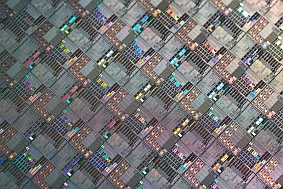
Due to developments in the semiconductor industry, especially EUV lithography, the cleanliness requirements for microchip production equipment have risen enormously.
Photo source:
Photo: Ecoclean_Optiken_cZeiss

Round and flat optical components are increasingly made from acid-sensitive glass. To avoid glass corrosion with these sensitive materials, appropriately designed cleaning and water treatment systems and processes – including software – are indispensable.
Photo source: Zeiss
Photo: Ecoclean_UCMSmartLine

Based on standardized modules, UCMSmartLine is a freely configurable system for numerous precision cleaning tasks.
Photo source: Ecoclean / UCM
Photo: Ecoclean_Semo_7
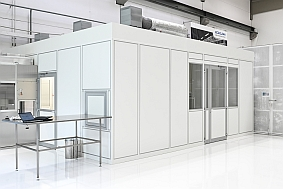
Ecoclean's and UCM's test centers, which are fitted with cleanrooms and analytical equipment, enable ultra-fine cleaning tests to be carried out under clean conditions.
Photo source: Ecoclean


